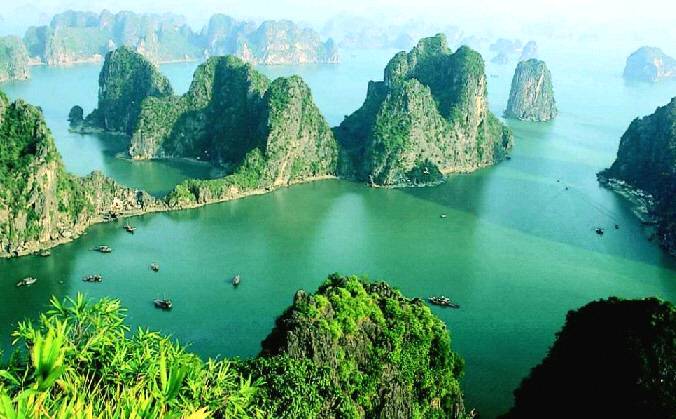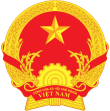Hạ Long Bay - world wonder of striking beauty
VGP - Recognized by the United Nations Educational, Scientific and Cultural Organization (UNESCO) as a World Heritage Site and listed among the Seven Natural Wonders of the World for its thousands of natural islands, Hạ Long Bay is a legendary world, making it one of the most magnificent scenic spots in Việt Nam.
 |
The geomorphology of Hạ Long Bay is known as a drowned karst landscape due to the exceptional combination of its limestone karst features which have been subject to repeated regression and transgression of the sea over geological time. The limestones of Hạ Long Bay have been eroded into a mature landscape of fengcong (clusters of conical peaks) and fenglin (isolated tower features) karst features, modified by sea invasion at a later stage.
The smaller islands are fenglin towers of 50m to 100m in height. Many have vertical walls on all or most sides and these continue to evolve by rock falls and large slab failures.
Marine invasion has added an extra element to the normal process of lateral undercutting of the limestone towers and islands in Hạ Long Bay. The most eye-catching feature is the main notches which cut into the entire rocky coastline. Notches are a feature of limestone cliffs worldwide, but those of Hạ Long Bay are exceptionally well developed and, at many sites, extend into arches and caves. This process of undercutting and subsequent erosion maintains the steep faces of the fenglin karst towers and thereby perpetuates the spectacular nature of the landscape.
A distinctive feature of Hạ Long Bay is the abundance of lakes within the larger limestone islands.
Extensive limestone caves represent another important feature of Hạ Long Bay, with three main types able to be identified: old phreatic caves formed below the water table of the time; old karstic foot caves formed by lateral undercutting of cliffs at base level; and marine notch caves formed at sea level where rock structures are powerfully eroded and eventually reduced to a wave cut platform.
As a result, Hạ Long Bay possesses a tremendous diversity of caves and other landforms which derive from the unusual geomorphological process of marine invaded tower karst. These areas provide a unique and extensive reservoir of data for the future understanding of geoclimatic history and the nature of karst processes in a complex environment.
Hạ Long literally means descending dragon(s) and according to local myth, the story goes as follows:
Long ago when our forefathers were fighting foreign invaders from the north, the gods from heaven sent a family of dragons to help us defend our land. This family of dragons descended upon what is now Hạ Long bay and began spitting out jewels and jade. Upon hitting the sea, these jewels turned into the various islands and islets dotting the seascape and formed a formidable fortress against the invaders. Our locals were able to keep their land safe and formed what is now the country of Việt Nam. The Dragon family fell so much in love with this area for its calm water and for the reverence of the people of Việt Nam that they decided to remain on earth. Mother dragon lies on what is now Hạ Long and where her children lie is Bãi Tử Long. The dragon tails formed the area of Bạch Long Vĩ known for the miles of white sandy beaches of Trà Cổ peninsula.
This myth matches with Vietnamese people’s myth on their origin, called Con Rồng Cháu Tiên. This myth describes the union between a king (representing the dragon) and his bride (representing a goddess) giving birth to 100 children which are the ancestors of Vietnamese people. The Hạ Long myth illustrates Vietnamese people’s belief of their origin and the fact that throughout their history, they have been aided by their ancestors, the dragon and the gods, in the defense of their land.
Visiting Ha Long Bay, many domestic and international politicians, poets, cultural celebrities and tourists said: “If you haven’t visited Hạ Long Bay, you haven’t been to Việt Nam.”
In recent years, Hạ Long Bay welcomed many international delegations, including leaders of many countries around the world.

